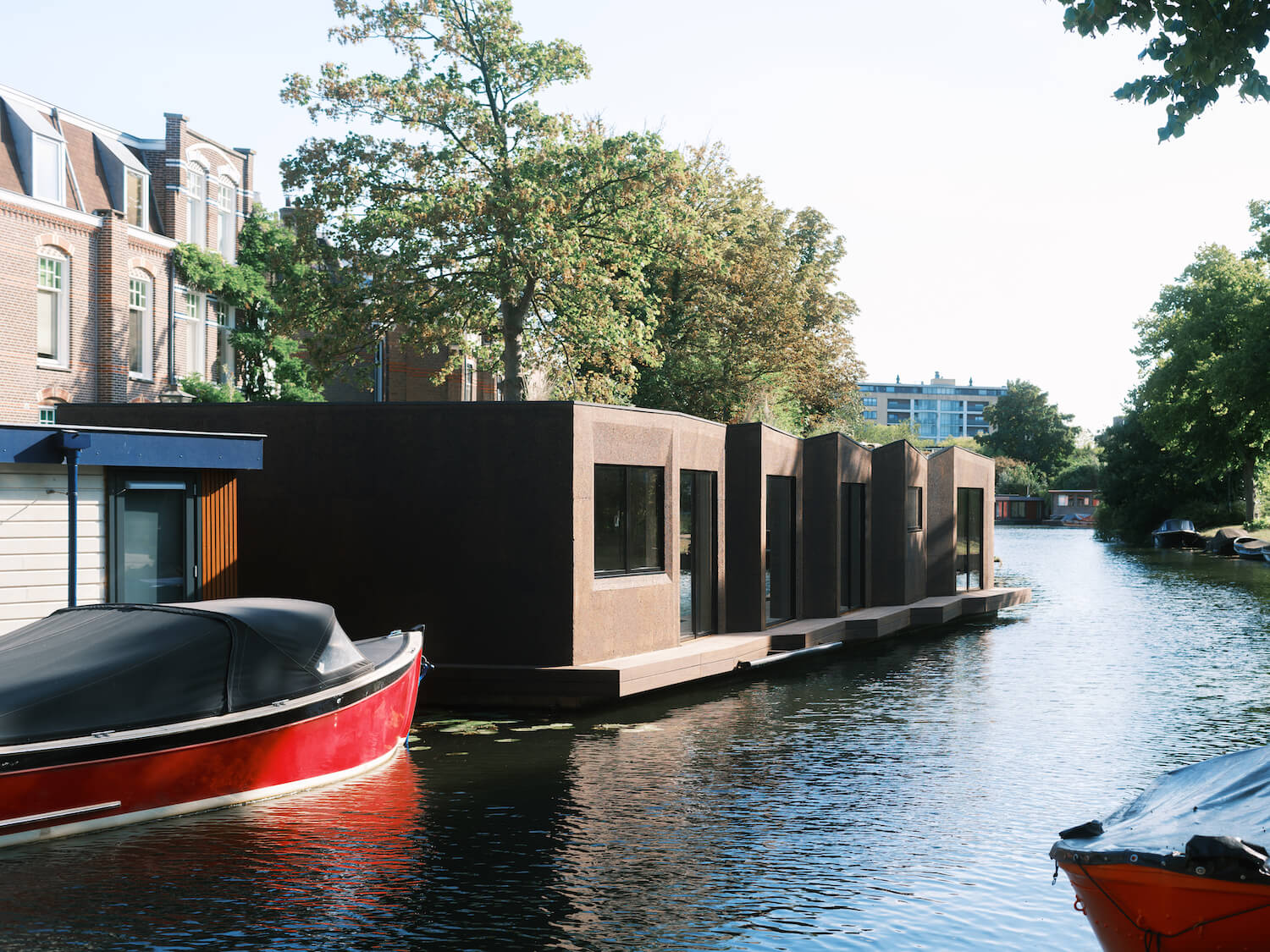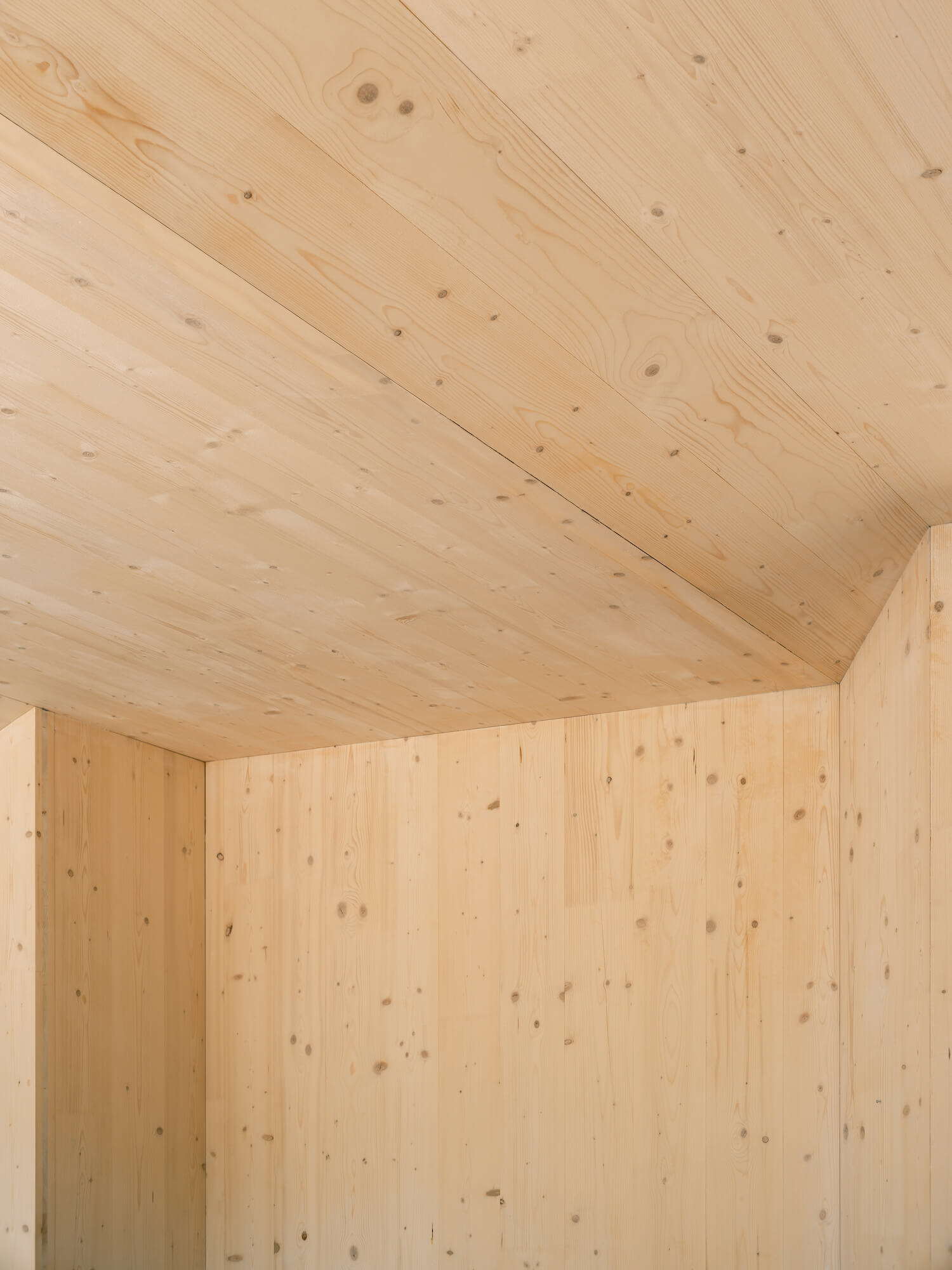The Float by Rotterdam-based architecture studio Studio RAP is a sustainable floating residence constructed from timber and solid cork and located along the lovely canals of Leiden, Netherlands. The simple building approach has various attractive additions, such as a folded facade.
Studio RAP created a sustainable floating home out of solid wood and cork for a private customer. The exposed cork outside softly complements the ambiance of the old city, while the exposed timber inside collects light and gives a delightful, peaceful internal experience. Its construction was drastically simplified by using only two primary materials, cork, and timber, to create simple yet exquisite detailing.
Also Read: How Will Floating Architecture Safeguard Our Future With Its Innovative Concept?
The architectural concept behind “The Float”:
The client requested that studio RAP create a sophisticated and environmentally friendly floating residence along the scenic canals in the ancient city of Leiden. The primary mass of the house was designed by the studio with the thought that it could be possible to avoid the appearance of a single floating container by creating several environments that depict various aspects of daily life.
Using this inspiration, many smaller modules were created and rotated in the direction of the verdant landscape on the other side of the canal. A roof and elaborate 3D corrugated walls were then made by folding additional panels into the spaces between the modules.
The Float’s inspiration:
Origami concepts and folded structures were the basis for this unconventional floating home. Compared to more traditional kinds of buildings, the Float allows for wider spans using less material. Architects constructed the Float out of Cross-Laminated-Timber (CLT), a solid, bio-based wood material left exposed for the interior treatment. Folds for the walls and roof were planned and parametrically optimized in close cooperation with the structural engineer, reducing more than 2000kg of timber.
A low-density cork insulating layer and a high-density cork exterior layer, connected by a cork mortar layer, are the only materials used to clad the timber frame. As a result, the walls can breathe, resulting in a pleasant internal climate.
The building’s shallow carbon footprint results from the expanded cork’s unique ecological origin, a 100% plant-based material employed in this project. Cork is a fantastic material for digital manufacturing; all of the cork modules had clean borders between them and custom window features thanks to CNC cutting.



The Float’s digital workflow:
From conception to completion, this project was entirely digitally realized. All digital production data for the Cross-Laminated-Timber (CLT) and cork were created directly from its digital design, and structural calculations were performed.
The benefit of a workflow that is entirely digital is that architects make adjustments without any issues up until the last stages of realization. Everything is still digital and flexible, making it simple to assess the planning, technical, and financial viability of various design possibilities.
In “The Float” project, sustainability played a prominent role and served as the basis for most design choices. This project aims to advance sustainable architecture in the construction industry by going beyond traditional building supplies and techniques.


























